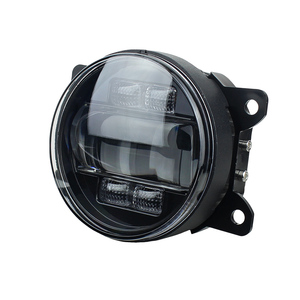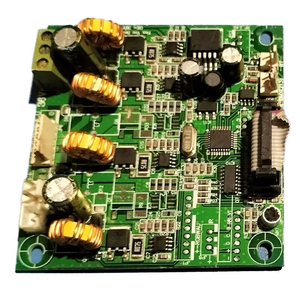(7144 ürün mevcut)






























































































































































































































LED aydınlatma, insanların aydınlatma düşüncesini devrim niteliğinde değiştirmiştir. LED lambalar, geleneksel aydınlatmaya göre daha enerji verimli ve çok yönlüdür. LED'ler, imalattan tarıma, otomotivden tüketici elektroniğine kadar hemen hemen tüm sanayilerde aydınlatma için kullanılabilir. WM LED'ler, ışık yayan diyotlar kullanarak ışık üreten verimli bir aydınlatma teknolojisidir. WM, sıcak beyaz anlamına gelir ve bu renk, sıcak ve davetkar bir atmosfer oluşturmak için kullanılır. WM LED'lerin konut, ticari ve endüstriyel aydınlatma gibi çeşitli uygulamaları vardır. Ayrıca akıllı telefonlar ve televizyonlar gibi elektronik cihazlarda da kullanılmaktadır.
WM LED'lerin, geleneksel aydınlatma teknolojilerine göre birçok avantajı vardır. Daha enerji verimlidirler, daha uzun ömre sahiptirler ve daha az ısı üretirler. WM LED'ler, farklı renklerde ve renk sıcaklıklarında mevcuttur. Bu, aydınlatma tasarımında daha büyük esneklik ve kişiselleştirme sağlar.
WM LED'ler, sıcak, beyaz ışıkları ile sıcak ve davetkâr bir atmosfer yarattıkları için popülerdir. Konut aydınlatması, ticari aydınlatma ve dekoratif aydınlatmada kullanılmaktadırlar.
WM LED'ler, ev sahipleri ve işletmeler için popüler bir tercihtir. Yumuşak ve nazik ışıklarıyla sıcak ve davetkâr bir atmosfer yaratırlar. Aşağıdaki uygulamalarda yaygın olarak kullanılırlar:
LED lambalar, genel olarak inşaat ve donanım aydınlatma teknolojisinde devrim yapmıştır. Çok çeşitli özellikler ve fonksiyonlar sunmaktadırlar, bunlar arasında:
Enerji Verimliliği
WM LED lambaları, enerji verimliliği ile bilinir. Çoğu durumda, geleneksel akkor ampullerden %50 daha az enerji tüketirler. Bu da elektrik faturalarının azalmasına yol açar. Ayrıca, enerjiyi ışığa dönüştürmede ısı olarak israf etmeden daha verimlidirler. Sonuç olarak, watt başına daha yüksek lümen oranına sahiptirler.
Uzun Ömür
LED lambalar, geleneksel aydınlatma seçeneklerine kıyasla belirgin şekilde daha uzun bir ömre sahiptir. Aklara gelen bazı durumlarda, akkor ampullerden 25'ten 50 kat daha fazla dayanabilirler. Ayrıca, uzun ömürleri sık sık değişim ve bakım maliyetlerini azaltır, böylece uzun vadede daha pratik ve maliyet etkin hale gelirler. Uzun ömürleri, ampul değiştirmek zor olan alanlar için de uygundur.
Yüksek Parlaklık
WM LED lambaları, yüksek parlaklıklarıyla tanınır. Daha yüksek bir ışık verimliliğine sahiptirler, bu da watt başına daha fazla lümen üretebilecekleri anlamına gelir. Ayrıca, açıldıklarında anında parlaklık sağlarlar; diğer bazı aydınlatma seçeneklerinin aksine, ısınma süresine ihtiyaçları yoktur. Bu, anında parlaklığın gerektiği alanlarda daha kullanışlı hale getirir.
Renk Çeşitliliği
LED lambalar, geniş bir renk yelpazesine sahiptir. Kırmızı, yeşil, mavi ve beyaz gibi çeşitli renkler üretebilirler. Ayrıca, ayarlanabilir renk sıcaklığı ayarları vardır. Bu, kullanıcıların tercih ve ihtiyaçlarına bağlı olarak sıcak beyazdan soğuk beyaza kadar seçim yapmalarını sağlar. Bu seçenekler, farklı atmosferler, ruh aydınlatması ve mimari tasarımlar için uygundur.
Dimlenebilirlik
LED lambalar, ışıkların istenilen seviyeye kısılmasına olanak tanır. Bu, kullanıcıların ihtiyaç ve gereksinimlerine göre parlaklığı ayarlamasını sağlar. Örneğin, daha fazla ışık gerektiren görevler için parlaklığı artırabilir, daha az ışık gerektiğinde de azaltabilirler. LED'leri kısma işlemi enerji tasarrufu sağlamaya ve aydınlatma armatürünün ömrünü uzatmaya yardımcı olabilir. Çünkü daha düşük parlaklık seviyeleri daha az enerji tüketir.
Akıllı Özellikler
Bunlar, aydınlatmada geliştirilmiş kontrol ve özelleştirme sağlayan LED lambalarının gelişmiş fonksiyonlarıdır. Örneğin, akıllı telefon uygulamaları, tabletler veya Google ve Amazon Alexa gibi akıllı ev asistanları aracılığıyla uzaktan kontrol edilebilirler. Ayrıca, akıllı LED lambaları, akıllı ev sistemine entegre edilebilir. Bu, diğer akıllı cihazlarla, örneğin termostatlar, güvenlik sistemleri ve sensörlerle birlikte çalışmalarını sağlar.
LED akıllı aydınlatma çözümlerinin çeşitli uygulamaları vardır. WM LED lambaları, ticari, endüstriyel ve konut ortamlarında kullanılır. Bazı yaygın uygulamalar şunlardır:
Doğru LED aydınlatma üreticisini seçmek, ihtiyaçların tatmin edici bir şekilde karşılanmasını sağlamak için önemli bir adımdır. Bir LED aydınlatma tedarikçisi seçerken dikkate alınması gereken bazı faktörler şunlardır:
Ürün Kalitesi
Aliciler, seçmeyi düşündükleri üreticinin ürün kalitesini kontrol etmelidir. Bunu, önceki müşterilerin incelemelerini ve referanslarını kontrol ederek yapabilirler. Bu, üreticinin sunduğu ürünlerin kalitesini anlamalarına yardımcı olacaktır. Ayrıca, üretici ile iletişime geçip wm led ışıklarının örneklerini isteyerek, ışıkların yapımında kullanılan malzemeler gibi inşa kalitesini kontrol edebilirler.
Ürün Çeşitliliği
Aliciler, çeşitli LED aydınlatma ürünleri sunan bir wm led üreticisi aramalıdır. Bu, aradıkları her türlü wm led lambayı elde etmelerini sağlayacak ve tek durak noktası haline getirecektir.
Mükemmel Müşteri Hizmeti
Aliciler, profesyonel ve dostça bir müşteri hizmetleri ekibine sahip bir üretici aramalıdır. Bu, iletişimi kolaylaştıracak ve herhangi bir sorunun hızla çözülmesini sağlayacaktır. Bunun yanı sıra, mükemmel müşteri hizmetleri, tüm alışveriş sürecinin sorunsuz olmasını sağlayacaktır.
Zamanında Teslimat
Zamanında teslimat, belirli son tarihlere sahip projelerde kritik öneme sahiptir. Bu nedenle, alıcıların zamanında ürün teslim eden bir wm led üreticisi aramaları gerekmektedir. Bunu, önceki müşterilerin teslimat süreleri hakkında söylediklerini görmek için incelemeleri kontrol ederek yapabilirler.
Sertifikalar
Aliciler, satın aldıkları wm led lambaların gerekli kalite standartlarını karşıladığını garanti altına almak için sertifikalara dikkat etmelidir. Üreticinin ISO ve CE sertifikaları gibi gerekli tüm sertifikalarına sahip olması gerekmektedir.
S1: WM LED lambalarının avantajları nelerdir?
A1: LED aydınlatma, uzun ömrü ve dayanıklılığı ile bilinir. WM LED lambaları 50.000 saate kadar dayanabilir ve kolayca zarar görmezler. Enerji verimlidirler ve daha az enerji tüketirler. WM LED lambaları, enerjilerinin %70-90'ını ışığa dönüştürür. Isı üretmedikleri için dokunması serindir. WM LED lambaları çok yönlüdür ve çeşitli renklerde gelirler. Çevre dostudurlar ve toksik elementler içermezler.
S2: LED ışık sayıları neyi ifade eder?
A2: LED'lerin aydınlatma rengini gösteren üç numarası vardır. Bu sayılar 2700K ile 3000K, 3500K ile 4000K, 5000K ile 6000K ve 7000K ile 8000K'dir. İlk sayı, ışığın sıcak olduğunu ve 2700K ile 3000K arasında değiştiğini gösterir. Bu, yatak odaları ve oturma odaları için idealdir. İkinci sayı, 3500K ile 4000K arasında değişen nötr ışığı gösterir. Bu, mutfaklar ve yemek alanları için idealdir. Üçüncü sayı, soğuk ışığı temsil eder ve 5000K ile 6000K arasında değişir. Bu, ticari alanlar ve ofisler için idealdir. Soğuk ışık ayrıca otoparklarda ve güvenlik için de kullanılır.
S3: WM neyi ifade eder?
A3: WM, kablosuz çok işlevselliği ifade eder. Kablosuz, ışığın kablolu bağlantı olmadan çalışabileceği anlamına gelir. WM lambaları, kısma ve renk değiştirme gibi çok işlevli özelliklere sahiptir.
S4: LED lambaları tüm gece açık bırakılabilir mi?
A4: Evet, LED lambaları uzun süre açık bırakılabilir. Diğer ampullerin aksine, LED'ler aşırı ısınmaz. Yüksek termal verimliliğe sahiptirler ve ısıyı ışığa dönüştürürler.
S5: LED lambaları uyku üzerinde etkili midir?
A5: LED'lerden gelen mavi ışık, doğal uyku düzenlerini bozabilir. Bunun nedeni, mavi ışığın melatonin üretimini baskılamasıdır. Melatonin, uykuyu düzenleyen bir hormondur. Mavi ışık, insanın daha uyanık hissetmesine neden olabilir. Sıcak LED ışığı, bu etkiye sahip değildir.